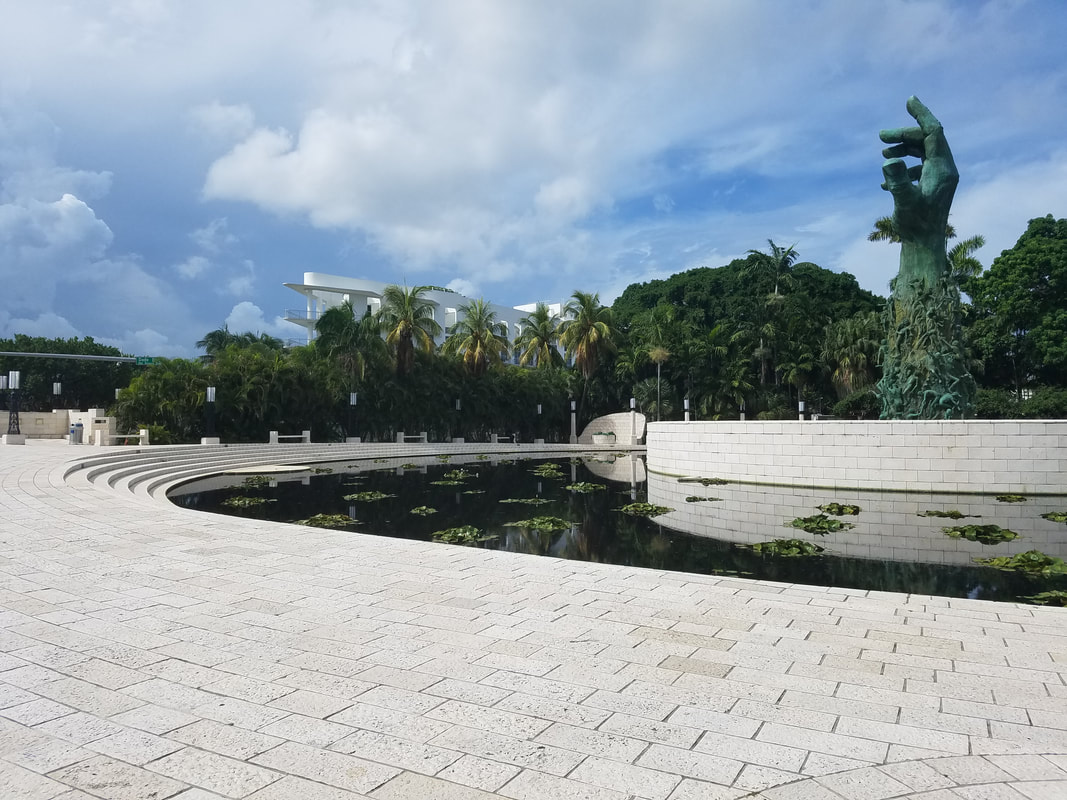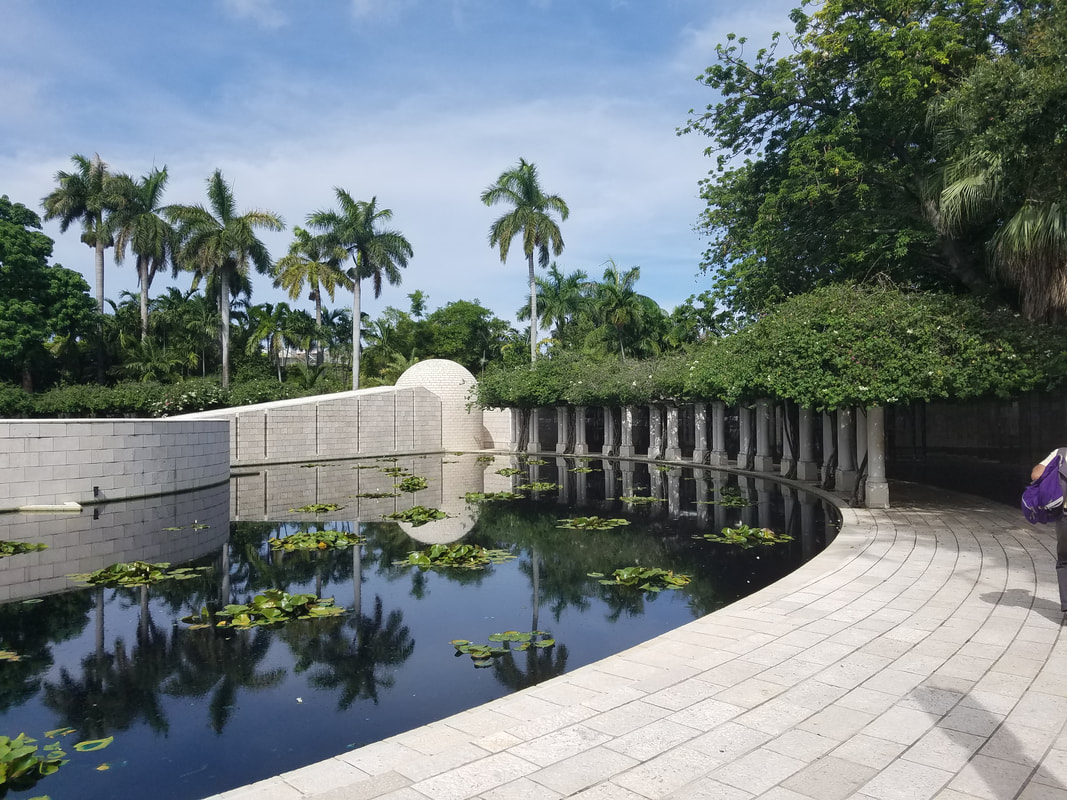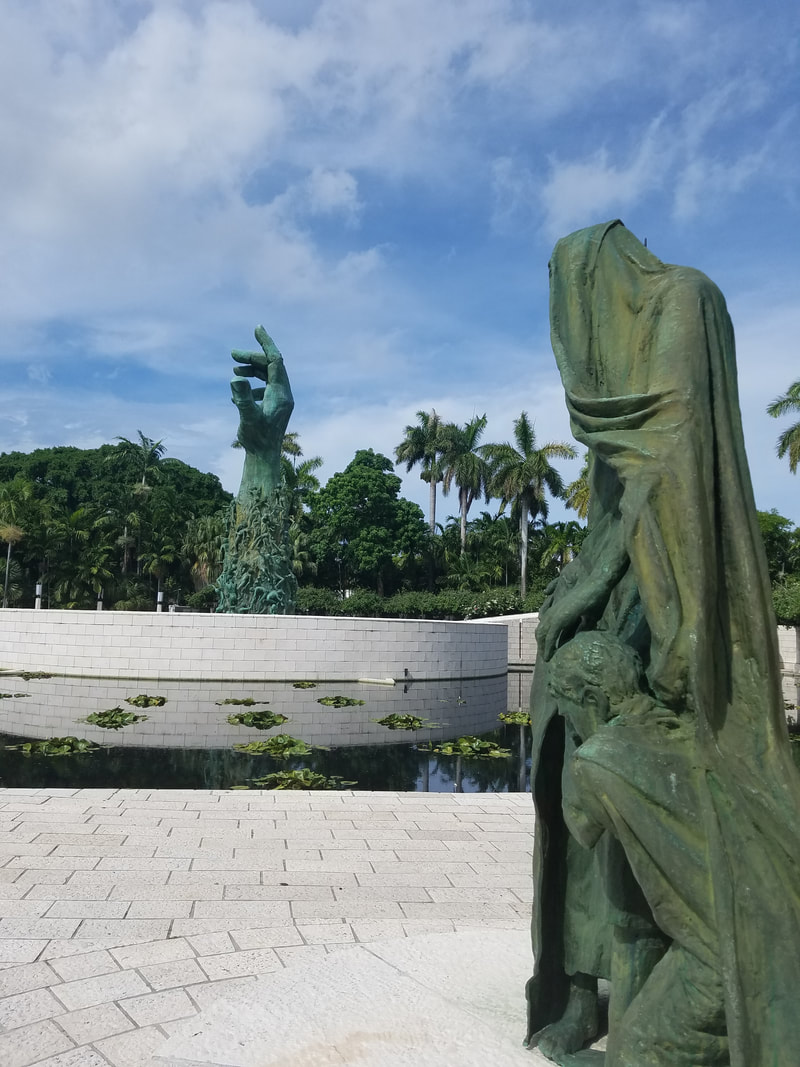|
One of the dearest places for me is the Holocaust Memorial on Miami Beach, where I worked for four years. Despite the fact that it is a grim reminder of unspeakable atrocities, the memorial is a beautiful and idyllic place. Ken Triester, the artist/architect who designed the sculpture of “Love and Anguish,” didn’t want a memorial that focused only on the death and suffering; he wanted a memorial that celebrated the lives of the six million murdered
The open space Memorial is surrounded by tropical trees and a reflection pond. Soaring into the sky and reflecting in the pool is a twenty-five-foot bronze sculptured hand coming out of flames of fire. People often ask what the hand represents. Sculptures of people trying to escape the flames cover the sculptured arm rising up into the vast sky. Most people believe it is the hand of the Jewish survivors. I believe it is the hand of G-d. Either way the statement this sculpture makes is that, despite the horrors, the people were not wiped out. From every vantage point the memorial gently directs visitors into a pictorial portrait of that horrendous history that inflicted great humiliation and torment. The walkways, the stones from Israel, the blood red bougainvillea, the reflection pond, the water lilies all memorialise the souls of those who perished. whose names are now etched on the black granite walls. I had the added privilege, during my time at the memorial, of being surrounded by elderly Holocaust survivors (all well into their 80s and 90s). It certainly prepared me to live with my aged parents. However, more importantly, they birthed in me the desire to write stories. In fact, several of the survivors asked me to write their story. Unfortunately, at the time I did not take that opportunity. I wish I had. I would have told the story of my landlord, a Polish Jew who went to Cuba after WWII and then had to flee for America during the Cuban revolution. Then there was the delightful couple whose love story started before the War. They were separated and sent to two different camps, and barely survived. Over sheer determination of will and love they found each other after the war. There’s the quiet troubled man who as a teenager was expected to clean the ovens and remove the gold from teeth of those who perished. There was the women who as a girl was captured in a classic photograph of the camps: a forlorn little girl looking out through barbed wire with her big brown innocent eyes. At the memorial we would talk for hours about this and that. One day as I was leaving early on a Thursday for the Easter holiday, she courageously asked me a question she had never ventured to ask of a “goyim” (Gentile) before. But she felt safe with me. “Can you tell me what Easter is all about? All I ever knew about it was that Christians would shout and spit at us (and this was in America after the war) cursing and calling us Christ Killers.” So I told her the story as best I could, about what it meant to me, and she had tears in her eyes at the end. “Why I didn’t know this before. It’s such a beautiful story.” There had been so many stories I heard there. When they asked I learned how to tell my story as well. I will forever cherish the value of all our stories. The Holocaust Memorial seems to be misplaced in the midst of one of America’s biggest tourist towns. But it's not just a place of remembrance for Jewish people. It speaks to the fact that so many people have ended up in Miami from around the world because of horrendous social, political and economic upheaval in their homelands. The memorial is a good reminder of what Miami has become, despite its efforts to make it into a millionaire’s playground with exotic villa’s and boats, youthful suntanned muscular bodies, and the rest of the glitz and glamor usually associated with Miami. At the entrance of the memorial there is a statue of a mother and child with a quote from Anne Frank engraved in the stone: “Despite everything, I believe that people are really good at heart.” Few people take the time to go all around the memorial to find another statue showing the mother and children lying dead on the ground above their heads another of Anne Frank’s quotes: “Ideals, dreams and cherished hopes rise within us, only to meet the horrible truth and be shattered.” It takes some effort for a visitor of Miami to take the time to see beyond the sunshine and blue skies and see the gritty human stories that make up this unique American city.
1 Comment
Becca Krantz
7/24/2017 11:32:45 am
Thanks, Mary. Brings tears to my eyes. I've never been to the memorial but now I hope to go one day. And I so appreciate this testament to the power of stories.
Reply
Leave a Reply. |
AuthorMiami is one of my most favorite places. Unlike the average tourist, for me the attraction is not the usual hype of beaches, fancy hotels and night clubs. I invite you to travel with me through my blog as I revisit the diverse neighborhoods that I grew to love during the twenty years I lived in Miami. Archives
March 2018
Categories |




 RSS Feed
RSS Feed